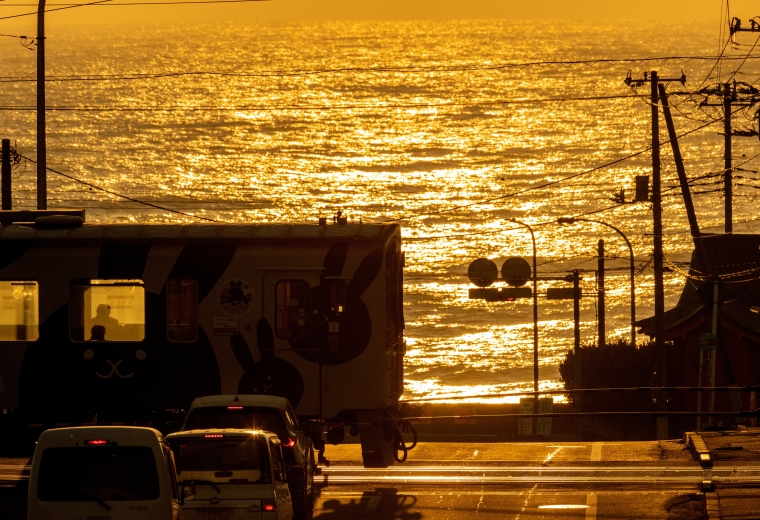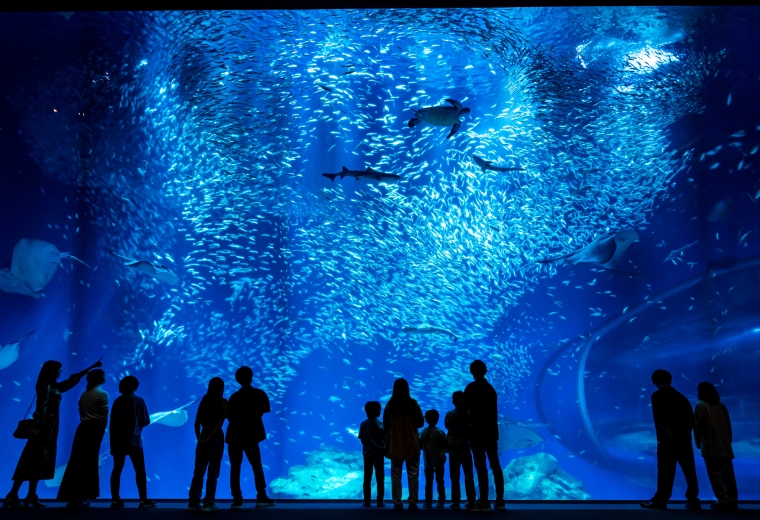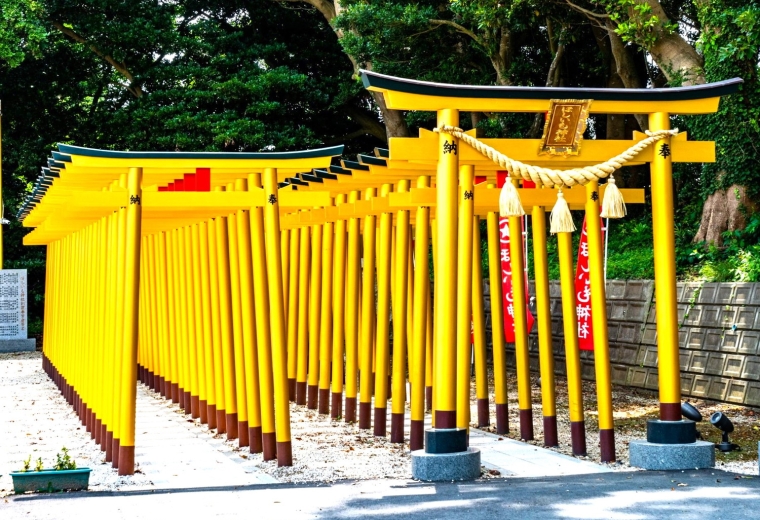Architecture Tour in Sakai, Ibaraki: 6 Works by Renowned Architect Kengo Kuma
Activity
Food
Other
2023.12.13
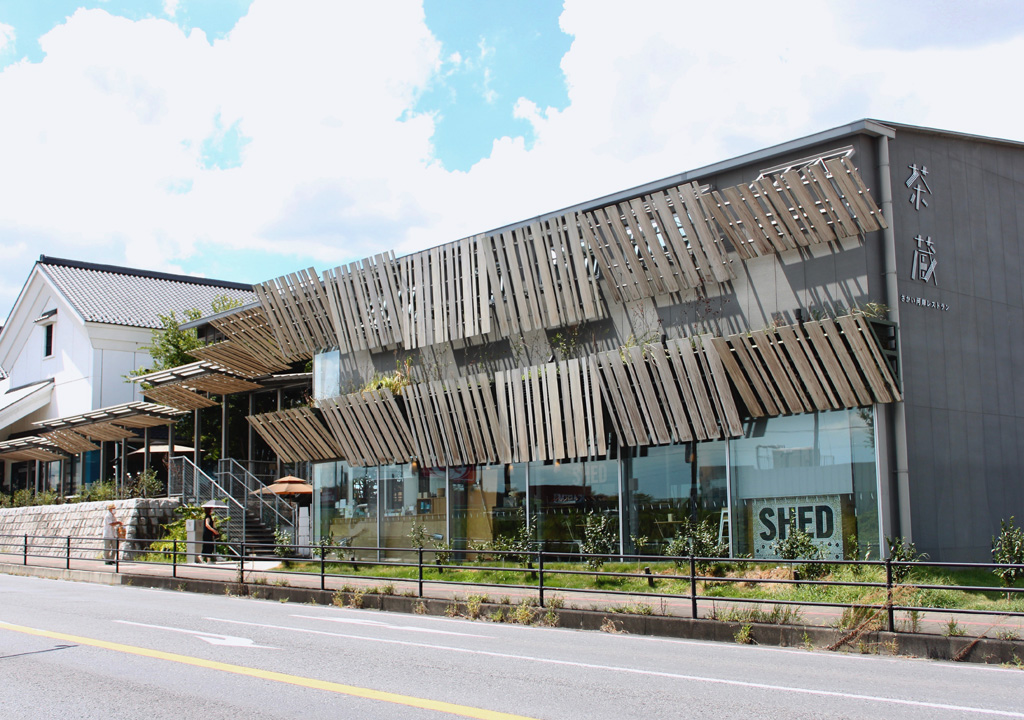
Sakai, a town in Ibaraki Prefecture, is home to six buildings designed by world-famous architect Kengo Kuma. In this charming town, you can tour these amazing locations while enjoying local food and art.
A New Paradise for Kengo Kuma Architecture! Ibaraki's Sakai Town
Sakai is located in southwest Ibaraki Prefecture near Tokyo. It prospered as a central logistics hub for many years as the town is home to the Tone River basin, which connects it to the capital.
In recent years, several striking architectural buildings in Sakai were designed and supervised by Mr. Kengo Kuma, a famous architect who designed many exceptional structures such as the Japan National Stadium for the Tokyo Olympics. Sakai was severely damaged in September 2015 due to flooding. After the tragedy, the town requested help from Kengo Kuma in the reconstruction.
Kengo Kuma is known for a unique artistic style that mainly utilizes wood. Since 2018, six buildings were constructed in Sakai with his distinctive style, resulting in the town being called the “new mecca for architecture by Kengo Kuma.”
In this article, we’ll introduce the highlights of these six structures. All six buildings can be seen in one day as they aren’t too far from one another, so you can thoroughly enjoy food and art together on a mini trip.
Cha-Gura: The Hub for The Dissemination of Local Food Culture
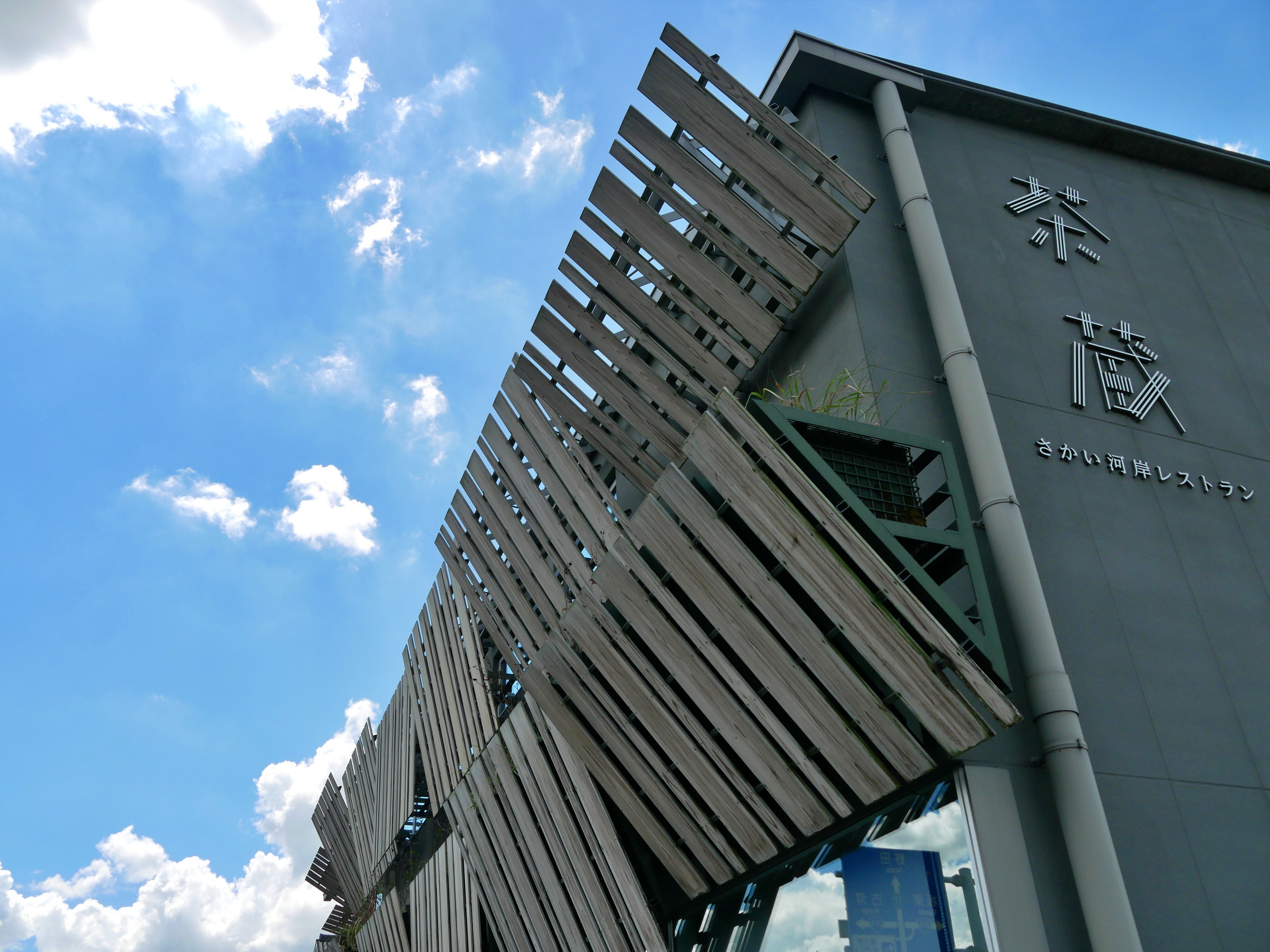
Cha-Gura was designed by Kengo Kuma and opened in April 2019. It became a local landmark after its completion.
Cha-Gura’s exterior is decorated with layered wooden boards that overlap one another like wings. The design is inspired by the tiled roofs of traditional Japanese storehouses and uses Japanese cedar grown in Ibaraki as materials.
The interior has a high ceiling with fabric hung in curves, and natural light that wonderfully matches the overall design. The fabric was dyed with tea leaves, resulting in green gradations. The Sashima area, where Sakai is located, was the first area in Japan to export tea overseas and its Sashima tea is named after its producing area. The building`s design is worthy of being called new era architecture as it intertwines traditional designs with modern culture.
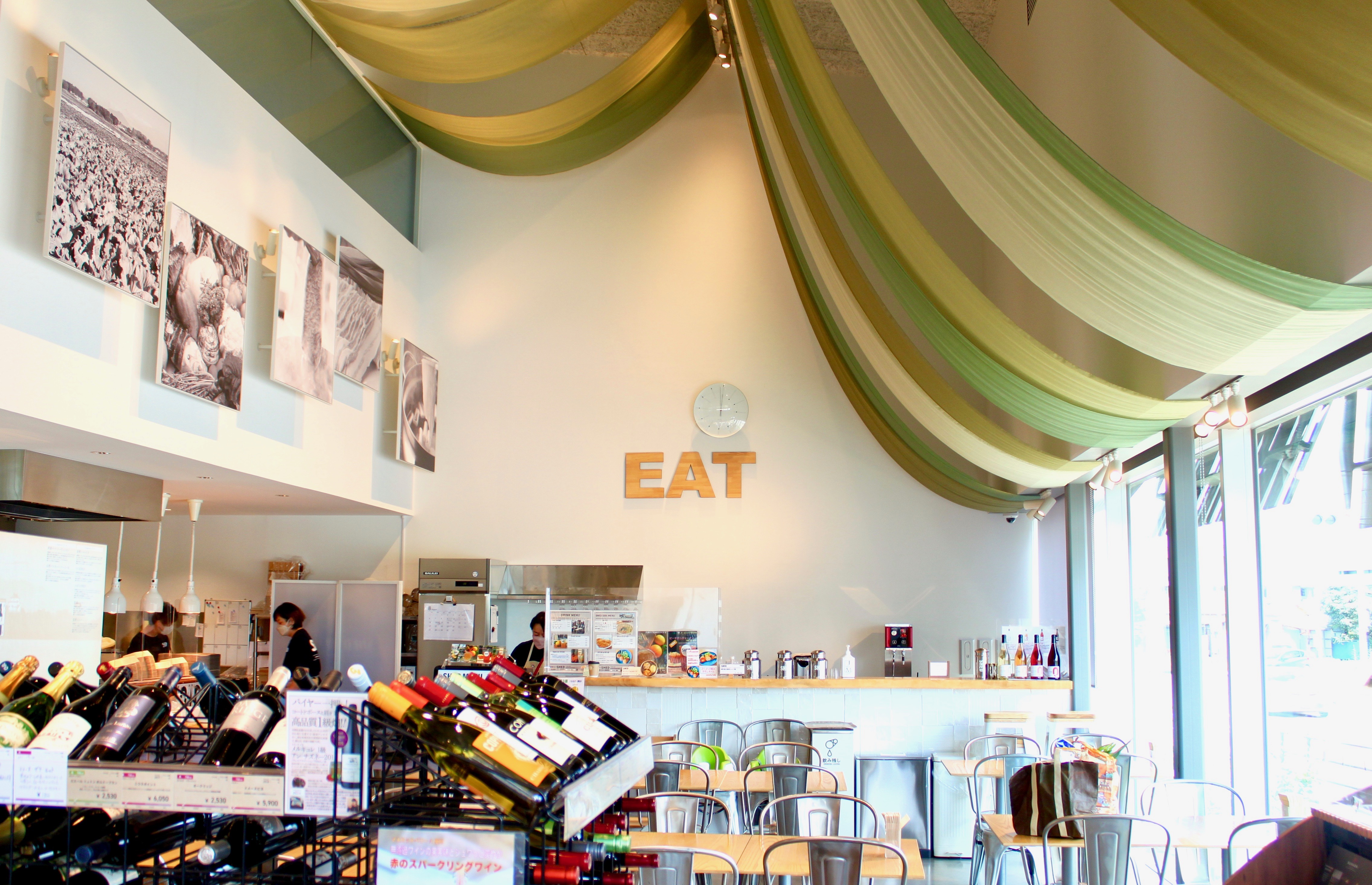
SHED is a small food area on the first floor where you can purchase and eat snacks or bento lunch boxes always made with local ingredients. Moreover, this floor also sells hand-picked daily necessities.
Wolfgang’s Steakhouse, a prestigious American restaurant with teppanyaki, is located on the second floor.
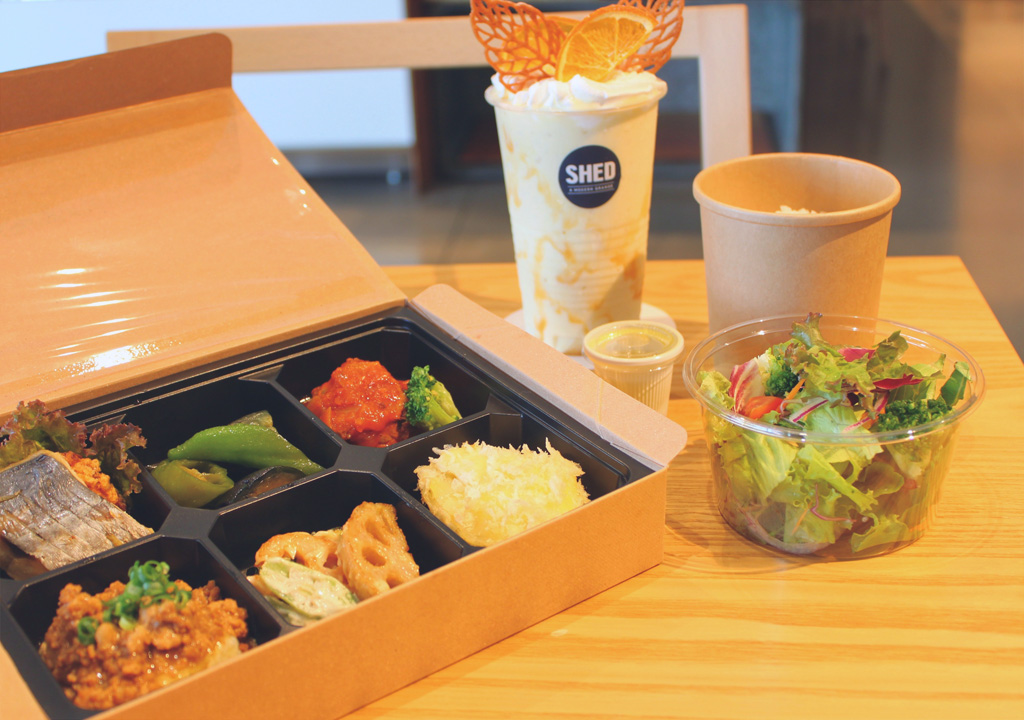
SHED BOX and Oimo Shake
The most popular menu at SHED is the SHED BOX made with Hitachi beef, Meishan pork, and vegetables harvested in Sakai. For drinks, the Oimo Shake made with sweet potatoes grown in Ibaraki is a current hot item. Enjoy delicious flavors unique to Ibaraki to the fullest!
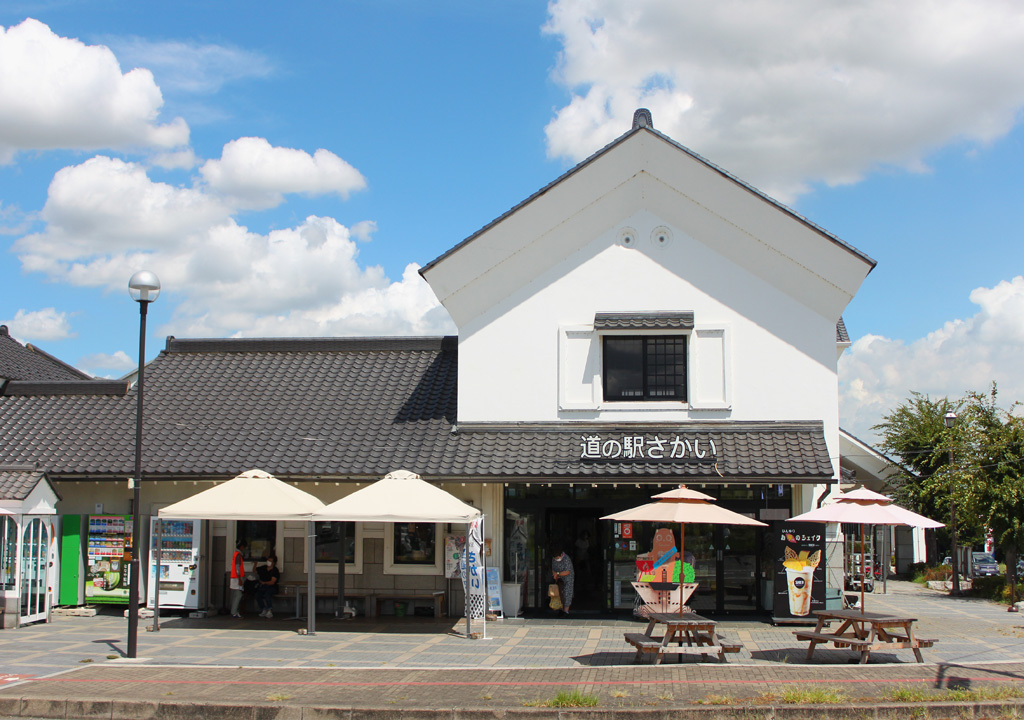
Cha-Gura is located along the national route next to Michi-no-Eki Sakai which was constructed to mimic a traditional storehouse with white walls and black roof tiles. Here, they sell local fresh ingredients and processed foods which are great for buying as souvenirs. It also functions as a tourist information center that conveys the charms and qualities of the Sakai area to travelers.
Sakai Sand: Enjoy Delicious Food from Sakai
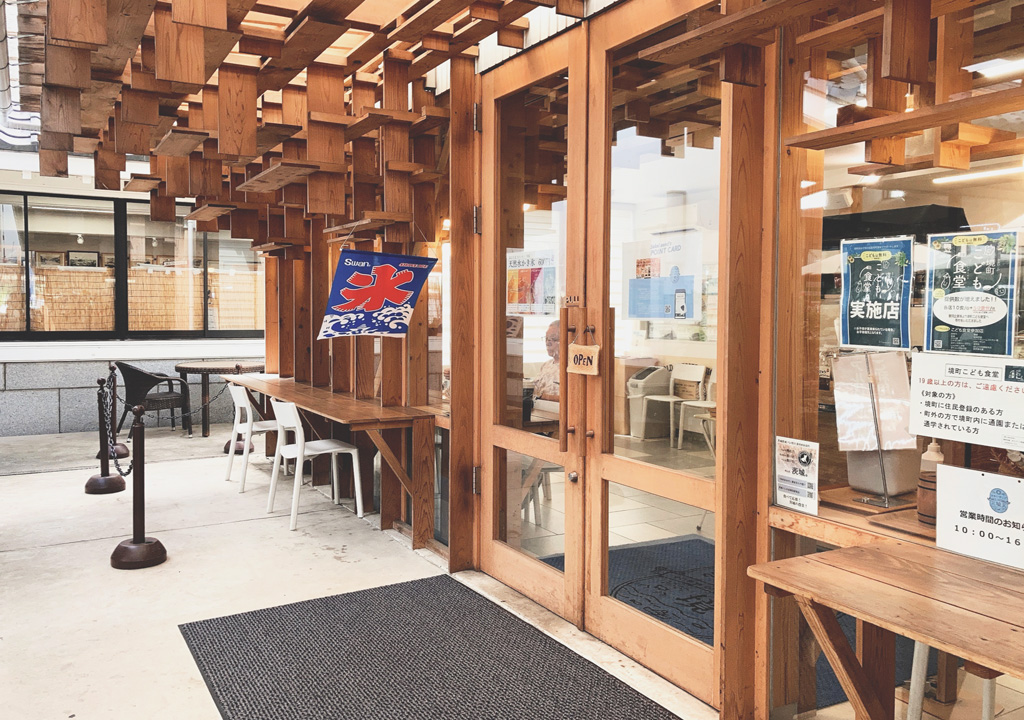
Sakai Sand, located in the corner of Michi-no-Eki Sakai, is the first building in the town that Kengo Kuma was involved in 2018.
The store’s small size strongly exudes Kengo Kuma’s distinctive style. The decorative wooden boards lining the entrance immediately reveal the designer’s signature touch.
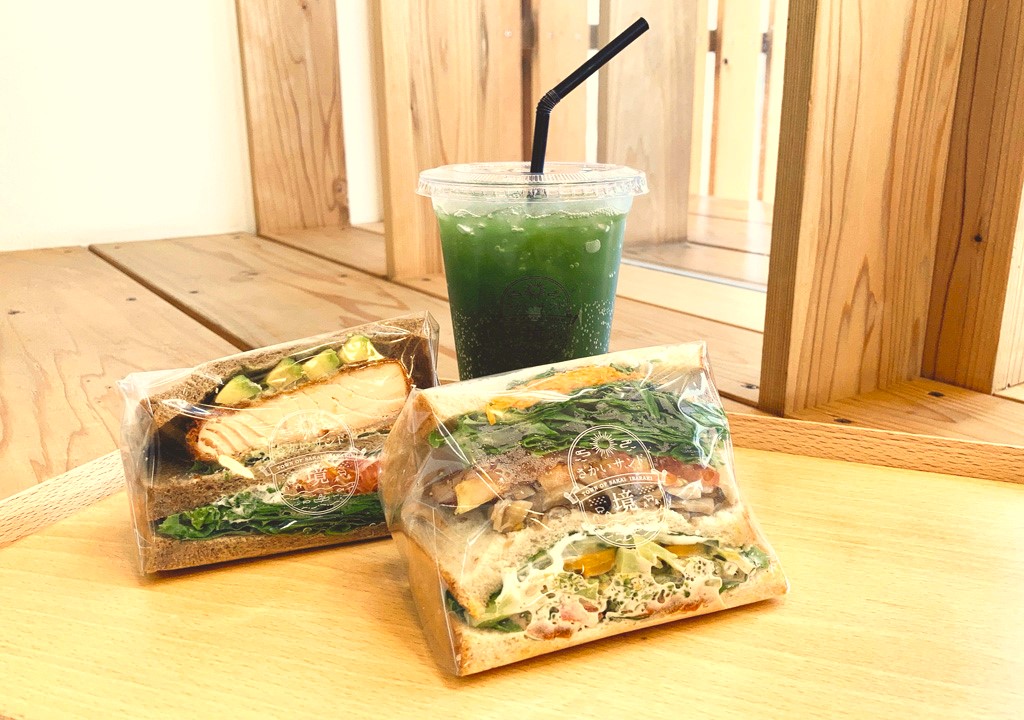
Veggie Packed Sandwich, Salmon Katsu & Avocado Sandwich, Sashima Tea Lemon Squash
The shop offers several types of sandwiches along with side dishes and desserts. Notably, all main ingredients are sourced locally from Sakai. The light and soft bread is made with locally grown wheat called Yumekaori, which has a strong aroma and a chewy texture.
The main feature of Sakai Sand is its concept of “sandwiches made with delicious ingredients from Sakai Town.” The thick sandwiches look and taste amazing! Many customers come after hearing about this shop; the popular sandwiches often sell out soon after opening.
In addition to vegetables and fruit, the condiments used at this shop are also available for purchase at Michi-no-Eki Sakai.
Information
- Location
- Michi-no-Eki Sakai
- Address
- Ibaraki, Sashima, Sakaimachi 1341-1 (https://goo.gl/maps/hBEHdJ4yC9g1XpbX9)
- Access
- Public Transportation: Take the bus bound for Riverside Station Sakai from Koga Station for 40 minutes or take the autonomous shuttle bus (direct connection via express bus) bound for Michi-no-Eki Sakai from the Sakai Expressway Bus Terminal for 35 minutes
Car: 10 minutes via the Sakai-Koga IC on the Ken-O Expressway - Business Hours
- 9:00 - 18:00
- Contact
- 0280-87-5011
- Website
- https://www.sakaimachi.co.jp/
Montenegro Hall: A Symbol of Friendship Between Sakai and Argentina
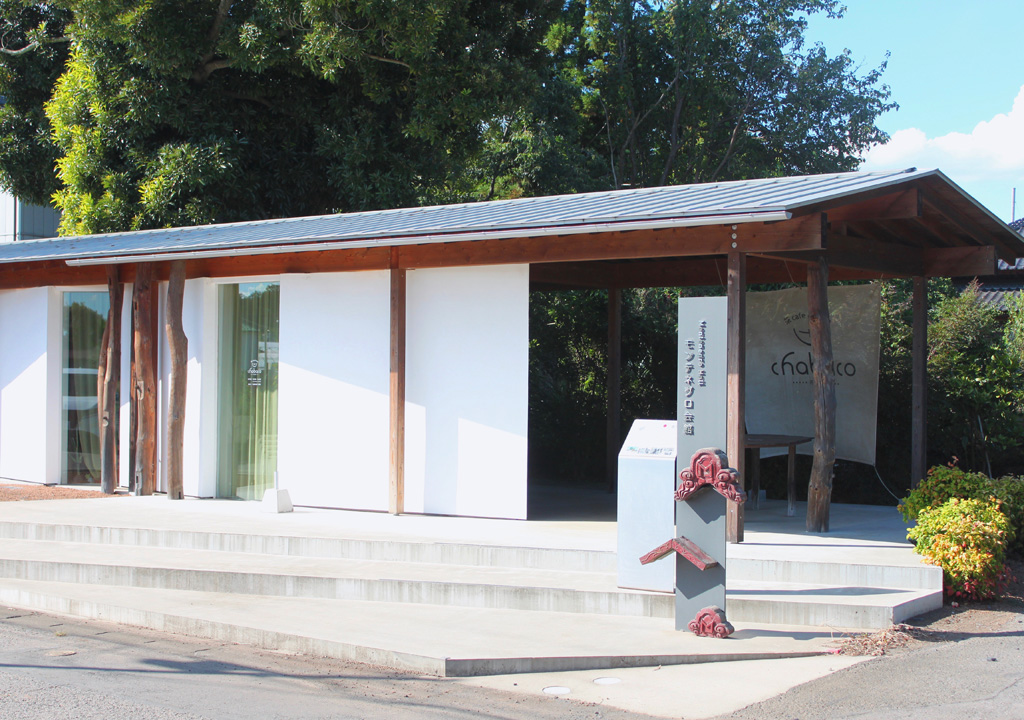
The origins of Montenegro Hall was first sparked by the interactions between feudal retainers native to Sakai and Argentine sailors during Commodore Perry’s arrival by ship in 1853. The hall was constructed in 1937 with the support of the Chargé D’affaires Arturo Montenegro, a descendant of those sailors, to commemorate the friendship between the Argentine Republic and Sakai that has existed since that time.
It was utilized as the local youth training center, but repairs became necessary after 80 years due to it being a wooden building. They took the opportunity in 2018, the 120th anniversary of the establishment of Japan-Argentina diplomatic relations, to reconstruct the building with Kengo Kuma’s design and the building took on its new appearance in 2020.
During the reconstruction, the original pillars and beams were reused while roof tiles from the original structure were incorporated into the commemorative monument near the entrance. The building is a mixture of both the present and the past while also being a symbol of the long friendship between Japan and Argentina.
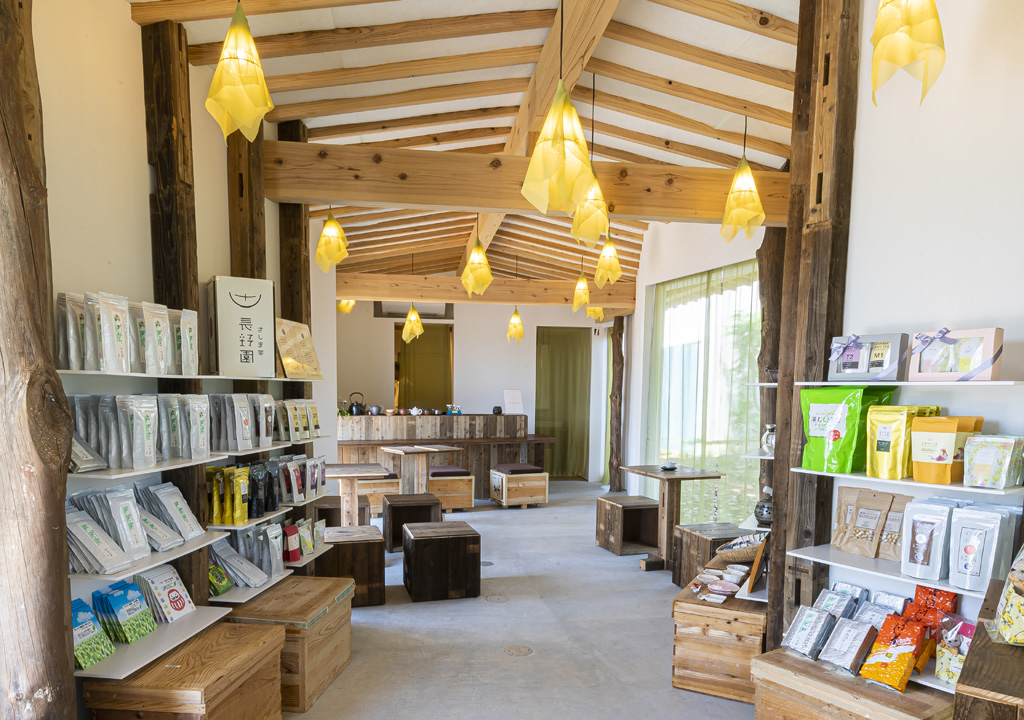
Picture courtesy of Tea Cafe & Shop Chabaco
There is currently a gallery inside the hall that exhibits the cultural exchange between Sakai and Argentina. Chabaco, operated by a local tea farm named Naganoen, can also be found inside.
Here, you can enjoy various types of Sashima teas produced in Sakai including green tea, black tea, and hojicha (roasted green tea). It’s a spot that tea enthusiasts can’t skip.
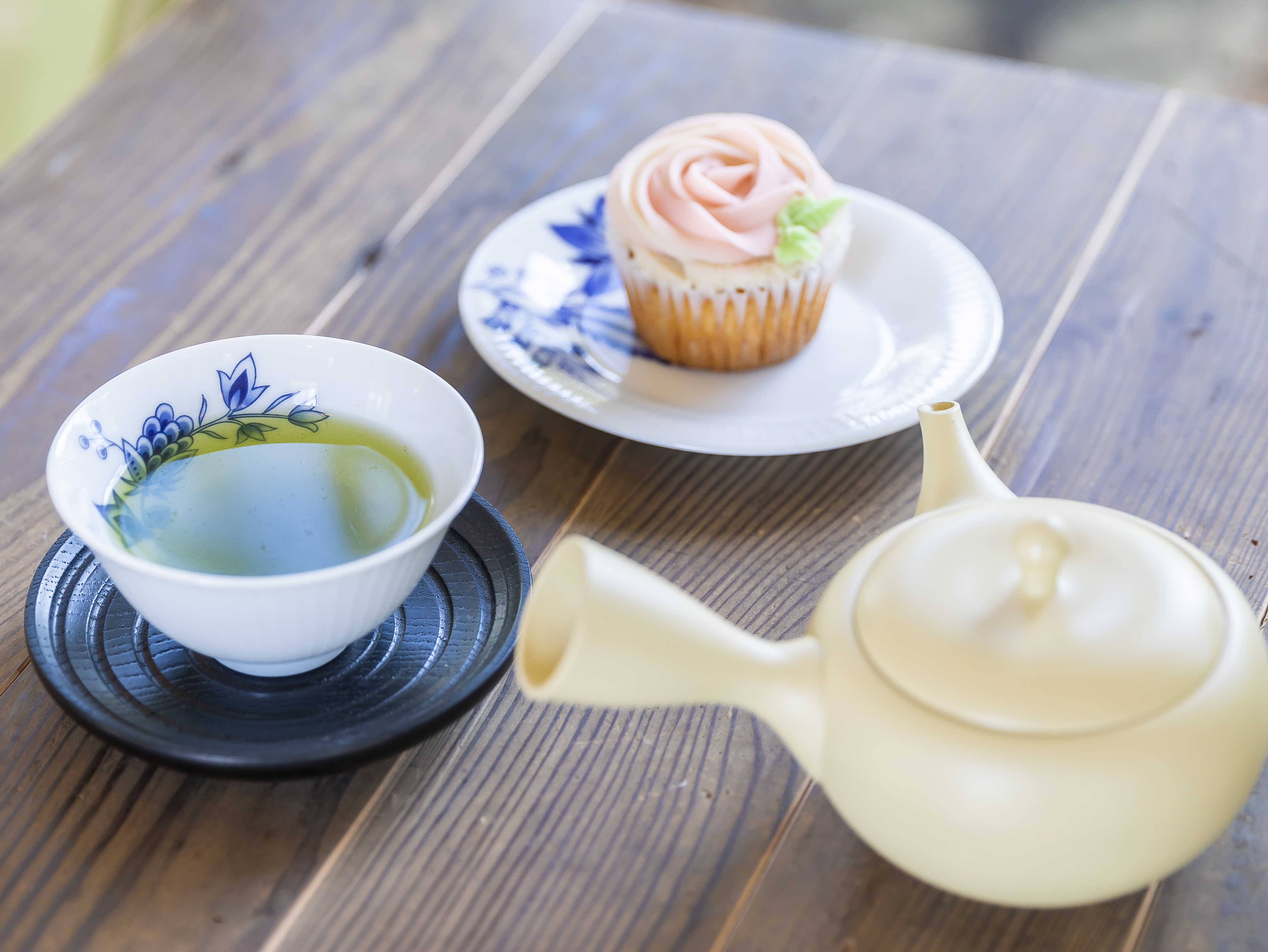
Picture courtesy of Tea Cafe & Shop Chabaco
Other than tea, their small yet adorable sweets are also popular. They are so elaborately crafted that it’s almost a waste to eat them. You can enjoy a very luxurious time in a space designed by a world famous architect.
Information
- Location
- Montenegro Hall
- Address
- Ibaraki, Sashima, Sakaimachi, Kamikobashi 446-4(https://goo.gl/maps/MR6uDnvGf8gvrX7v7)
- Access
- Public Transportation: 10 minutes on foot from Sakai Expressway Bus Terminal
Car: 5 minutes via the Sakai-Koga IC on the Ken-O Expressway - Business Hours
- 10:00 - 16:00
- Contact
- 050-3138-2885 (Tea Cafe & Shop Chabaco)
- Website
- https://www.town.ibaraki-sakai.lg.jp/page/page002355.html
S-BRAND HOSHIIMONO 100 Café: Taste Coffee and Desserts Made with Dried Sweet Potatoes
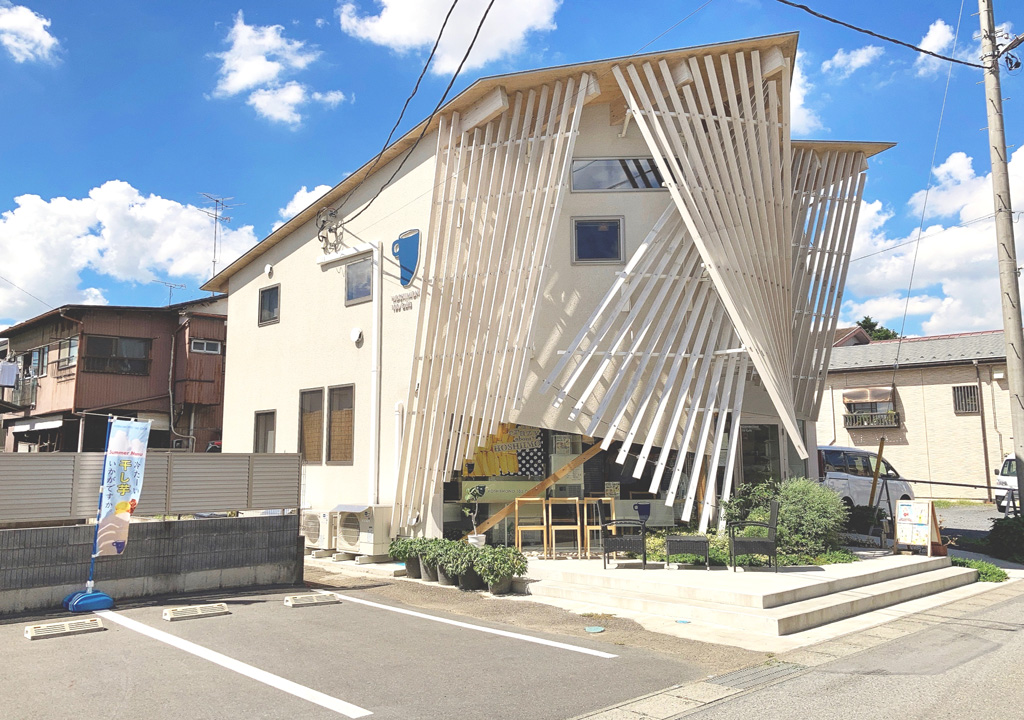
S-BRAND HOSHIIMONO 100 Café is the newest building in Sakai to be designed by Kengo Kuma and was completed in May 2021.
This building is part of the S-project. The S-project is an abbreviation for the SAKAI Project, a rural development project created to deepen the connection between the town and its residents.
HOSHIIMONO 100 Café is a themed cafe centered around hoshi-imo or dried sweet potatoes, an Ibaraki specialty.
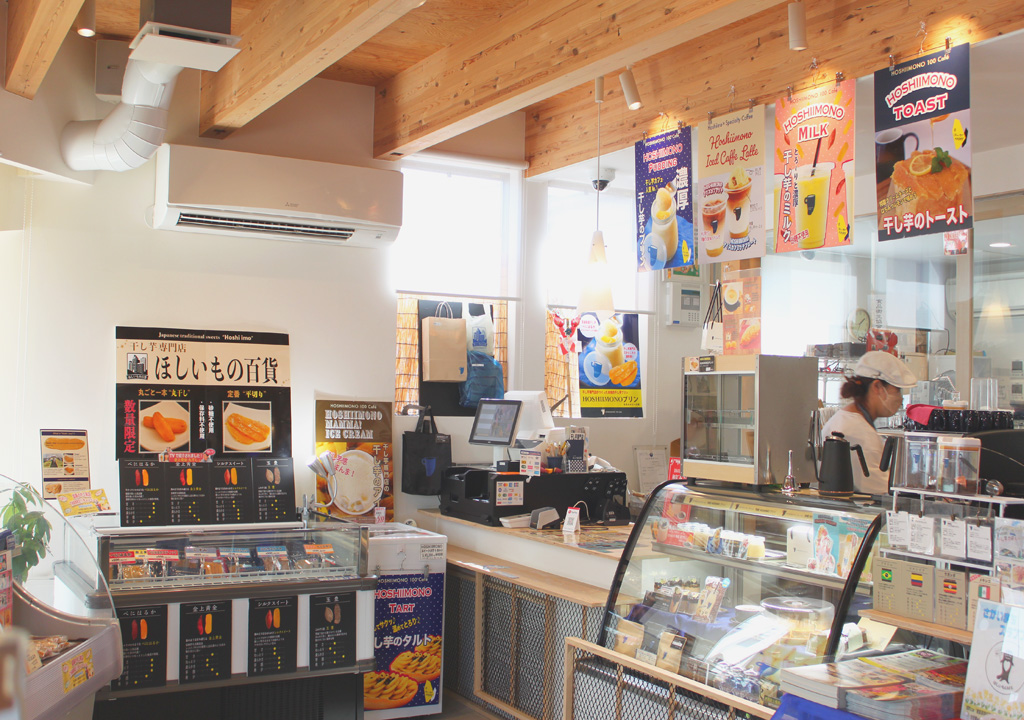
The long, cedar boards outside the building represent the fibers of a sweet potato.
The shop interior is designed to have a wood base with white as the main color, creating a simple but warm atmosphere. The building is two stories tall with the first floor being where you order and a product sales space while the second floor is the food and drink space.
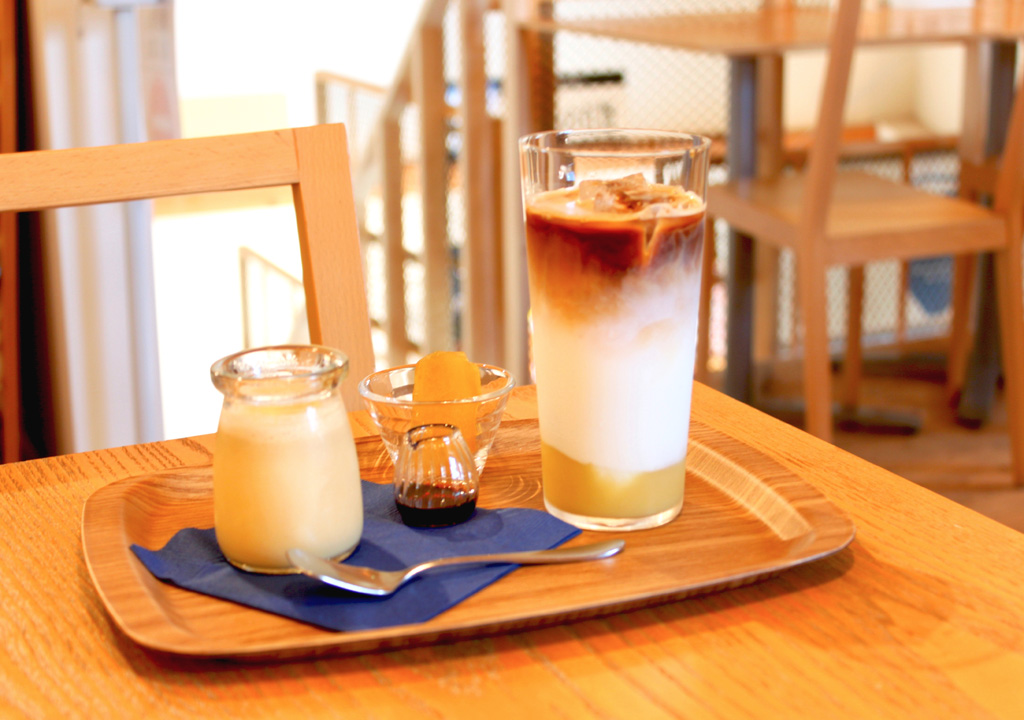
HOSHIIMONO Custard Pudding & HOSHIIMONO Caffe Latte
S-Brand HOSHIIMONO 100 Café is Japan’s first themed cafe centered around hoshi-imo or dried sweet potatoes. The cafe sells adorable hoshi-imo themed goods that can only be found at this shop. The menu is also almost fully original to the cafe with only dishes that truly bring out the texture and sweetness of hoshi-imo.
The HOSHIIMONO caffe latte is an especially popular item here. The sweetness of the hoshi-imo mellows out the bitterness from the coffee while the richness of the milk envelops your mouth. You’ll be surprised once you take a sip at how well hoshi-imo goes with coffee.
Information
- Location
- S-Brand HOSHIIMONO 100 Café
- Address
- Ibaraki, Sashima, Sakaimachi 1459-1 (https://goo.gl/maps/9o9byRbctwPEjteW8)
- Access
- Public Transportation: Take the autonomous shuttle bus (direct connection via express bus) bound for Michi-no-Eki Sakai from the Sakai Expressway Bus Terminal for 30 minutes (alight at Hoshiimo Cafe)
Car: 10 minutes via the Sakai-Koga IC on the Ken-O Expressway - Business Hours
- 10:00 - 18:00
- Contact
- 0280-33-3118
- Website
- https://www.hoshiimono100ka.com/
S-Gallery Shuku Sanpo Museum & S-Lab
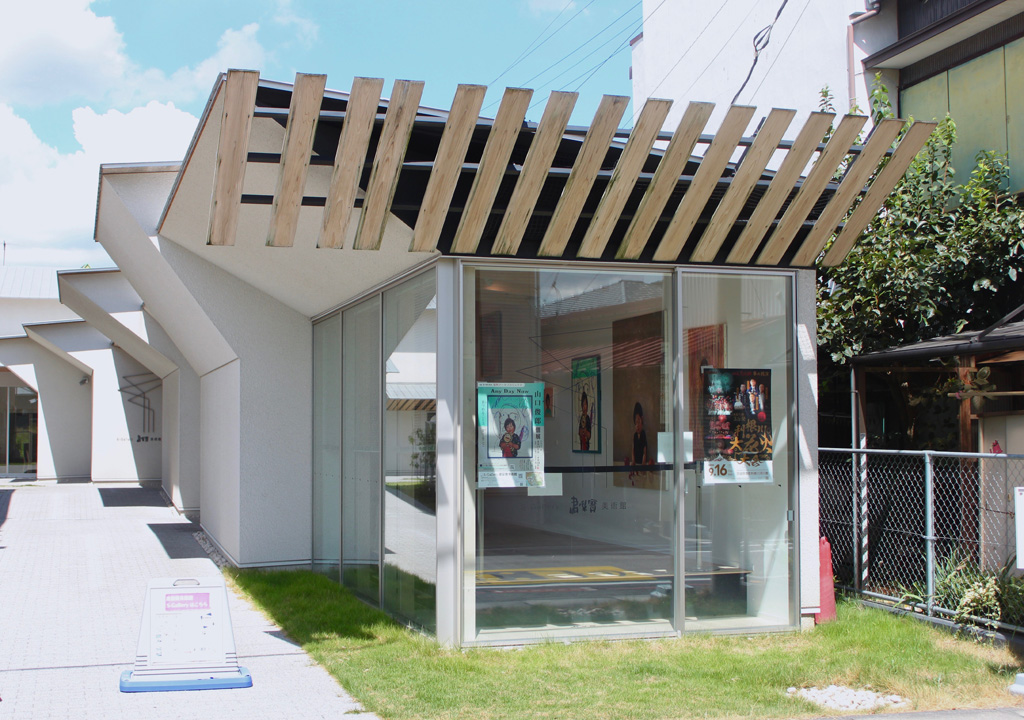
S-Gallery Shuku Sanpo and S-Lab are both facilities from the same S-project. They are only a few steps away from S-Brand HOSHIIMONO 100 Café.
These two white buildings are quietly tucked away in a peaceful residential area and positioned next to one another in an L-shape.
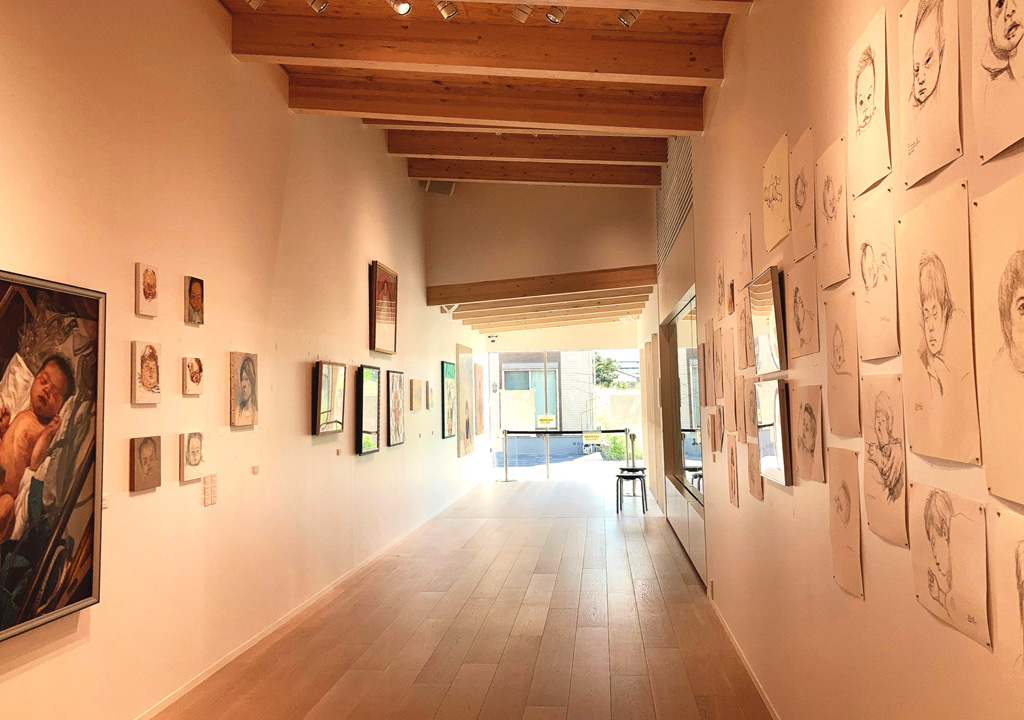
S-Gallery is a small art museum with a single long and narrow room. The works of Shuku Sanpo, an aloof painter with an immensely impactful style who spent his later years in Sakai, are displayed on the walls here. The museum also hosts special exhibits featuring works from various artists that rotate every month and a half.
This building as well utilizes tons of wood as is characteristic of Kengo Kuma’s style with white as its main color. There are also several large windows that overall give the gallery an immaculate, soft appearance.
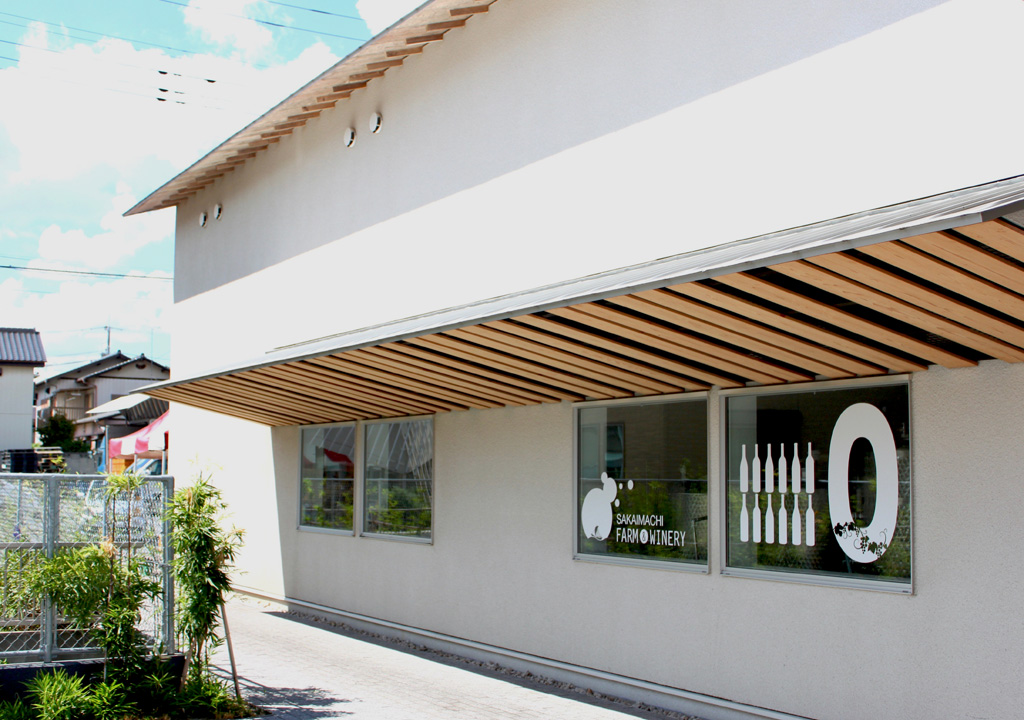
S-Lab next door is designed to harmonize with S-Gallery. This building is a facility for the research and development of new specialty products. The research, development, and commercialization of products such as hoshi-imo, wine, and more are conducted here. The lab cannot be toured as it is not open to the public, but you can watch the research process through the glass. There’s also a small food and drink space by the entrance.
Information
- Location
- S-Gallery Shuku Sanpo Museum
- Address
- Ibaraki, Sashima, Sakaimachi 1455-1 (https://goo.gl/maps/nAPQYeHrPHUHNnit7)
- Access
- Public Transportation: Take the autonomous shuttle bus (direct connection via express bus) bound for Michi-no-Eki Sakai from the Sakai Expressway Bus Terminal for 30 minutes
Car: 10 minutes via the Sakai-Koga IC on the Ken-O Expressway - Business Hours
- 10:00 - 17:00
- Contact
- 0280-23-4148
- Website
- https://www.sakaimachi.jp/shukusampo-museum.html
An Architecture Trip Around Ibaraki
Ibaraki Prefecture is home to many structures designed by contemporary architects that have won outstanding awards. It’s an area that those who enjoy looking at and touring architecture absolutely cannot leave off their itinerary.
Moreover, Kengo Kuma’s architecture can be found in places other than Sakai such as the Hirosawa Art Museum in Chikusei and Maruyama Nori Tsukuba Shop in Tsukubamirai. There are also many different notable architectures in the prefecture, such as Hitachi Station, designed under the supervision of Hitachi native Kazuyo Sejima to appear as if it’s floating in the sky, and the Mito City West Library, designed by Chiaki Arai, which appeared in the film “Library Wars.” There’s also the Ibaraki Museum of Modern Art, designed by Junzo Yoshimura, that won the BCS Prize (an architecture prize run by the Japan Federation of Construction Contractors) and many more.This region is an absolute must-visit for architecture enthusiasts, as it promises an incredibly satisfying experience.
